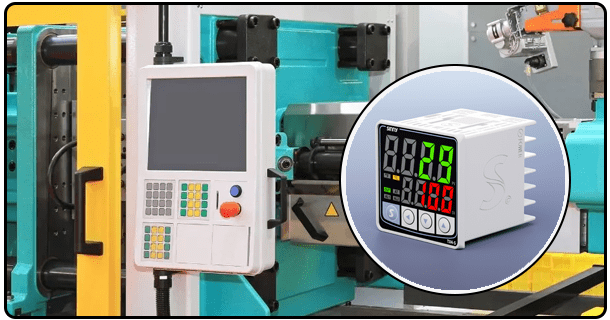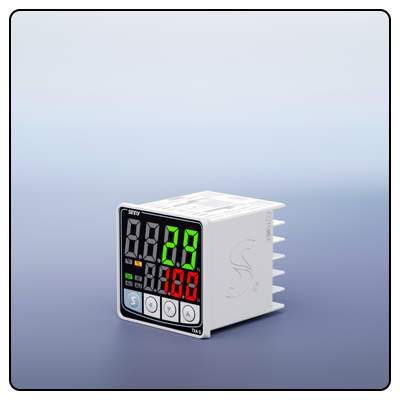Understanding PID Controllers for Temperature Regulation
Uncover the intricacies of PID temperature controllers used for precise temperature regulation. Discover how their proportional, integral, and derivative components collaborate seamlessly to enhance accuracy, stability, and efficiency across a variety of industrial settings. Consult our detailed setup, tuning, and real world applications guide!
1. Introduction
A Brief Explanation of PID Controllers and Their Role in Temperature Regulation.
PID controllers - or Proportional Integral Derivative controllers - are powerful tools in automatic control systems. Used primarily to achieve desired output such as temperature via variable adjustment processes, PID controllers offer stability, accuracy and quick response in temperature regulation systems - qualities invaluable in many industrial settings.
Evolution of PID Controllers
PID controllers represent an incredible accomplishment in control engineering. At first, these simple mechanical devices became sophisticated digital ones over time. Now used across industries from manufacturing to chemical processing due to their efficiency and dependability.
2. PID Algorithm Exposed Outline Three Components of PID Algorithm
Proportional (P): This component creates output proportional to current error value; thus providing immediate responses against deviations from setpoint which helps quickly lower error values.
Integral (I): Over time, integral component accumulates past errors to assist in eliminating any residual steady state error that the proportional component alone cannot address.
Derivative (D): The derivative component provides a forecasting capability and serves to reduce future errors based on current rate-of-change data, providing a damping effect which boosts system stability and response time.
How These Components Fit Together
The PID algorithm uses these three elements in concert to dynamically adjust control input. Proportional response addresses present errors while integral response corrects past ones and derivative response anticipates potential future ones, so together they ensure your system efficiently reaches and maintains desired temperature precisely and quickly.
3. Applications of PID Controllers
Industrial PID controllers play an essential role in numerous industrial applications, including:
Manufacturing: Establishing precise temperature regulation during processes like plastic molding and metal forging.
Chemical Processing: Ensuring optimal reaction temperatures that ensure product quality and safety.
HVAC Systems: Regulating building temperatures efficiently while increasing comfort levels for energy savings and energy conservation.
Benefits of PID Controllers
Applying PID controllers in temperature-sensitive processes offers multiple advantages:
Improved Accuracy: PID controllers provide precise control, reducing variability and ensuring consistent product quality.
Enhanced Stability: They help maintain stable system performance by addressing errors promptly.
Energy Efficiency: Optimized temperature control can lead to significant energy savings.
4. Setting Up a PID Controller
Step-By-Step Guide
Identify System Requirements: Determine desired temperature setpoint and acceptable error margins. Select PID Controllers that Fit: Find controllers which match up well with the requirements and specifications for your system.
Initial Configuration: Set initial values for proportional, integral, and derivative gains according to manufacturer recommendations or system modeling.
Calibration: Fine tune the PID parameters using trial and error or systematic tuning techniques until achieving optimal performance.
Monitoring and Adjustment: Regularly monitor the system performance, making adjustments as required to keep optimal control. Adjust PID settings accordingly in order to maintain effective regulation.
Expert Tips and Best Practices
Start With Proportional Control: Start off by starting out with proportional-only controller before gradually adding integral and derivative components.
Use A Systematic Tuning Method Such As Ziegler-Nichols For Effective Tuning: For systematic tuning methods that ensure effective results.
Monitor System Response: Regularly examine how well the system responds to disturbances and make necessary modifications in PID settings to maintain maximum performance.
5. Understanding PID Concepts
Tuning Methods
Modern tuning techniques such as the Ziegler-Nichols or Cohen-Coon methods offer systematic approaches for selecting optimal PID parameters, setting PID gains to meet desired performance characteristics such as minimal overshoot, quick settling time and stable operation.
Dealing With Disturbances
External disturbances may hinder system performance in real world applications. Advanced PID controllers feature feedforward control or adaptive tuning options to effectively address such disturbances, maintaining stability and responsiveness for their systems.
6. Case Studies and Real-World Examples
Its Manufacturing Plant: This case study in a plastic molding factory demonstrated how PID controllers helped decrease temperature variations by 20%, leading to improved product quality with less waste produced as a result of using them.
Professional Experience with PID Solutions
Many professionals who have implemented PID solutions report significant enhancements in process control and efficiency after adopting these PID controllers, like an HVAC engineer sharing how PID controllers enabled a 15% decrease in energy usage while still providing optimal indoor climate conditions.
7. Conclusion
Summary of Key Points
PID controllers play an indispensable role in temperature regulation in various industries. An in-depth knowledge of their proportional, integral, and derivative components and how they interrelate is crucial for effective implementation; PID controllers offer many benefits including increased accuracy, stability and energy efficiency - proper setup and tuning are vital in order to reach peak performance levels.
Understanding and Implementing PID Controllers
Achieve excellence when employing temperature-sensitive processes is paramount for engineers and technicians involved with temperature-control applications, with proper implementation leading to considerable operational improvements, cost reductions, and enhanced product quality.
- Upgrading to PID Temperature Controllers: What You Should Know
- Real-World Applications of PID Temperature Control























